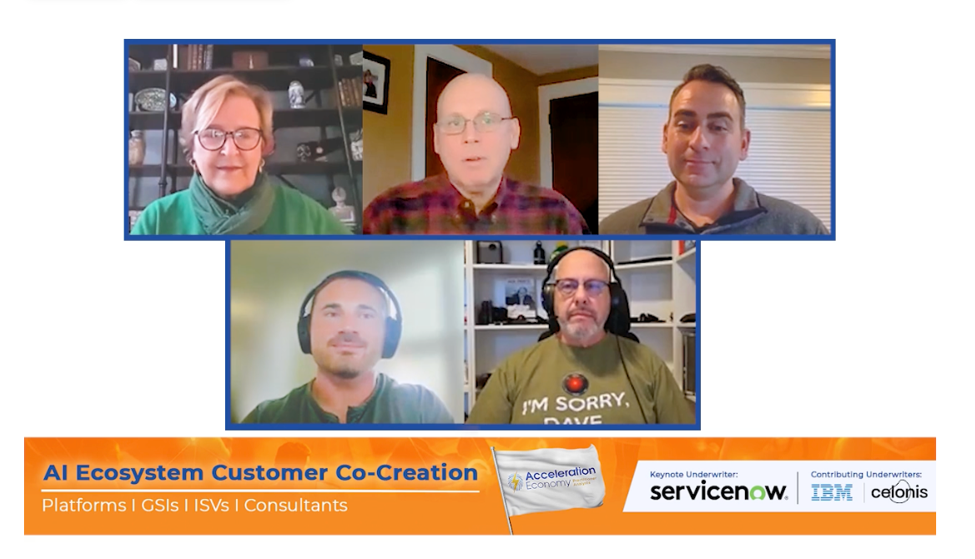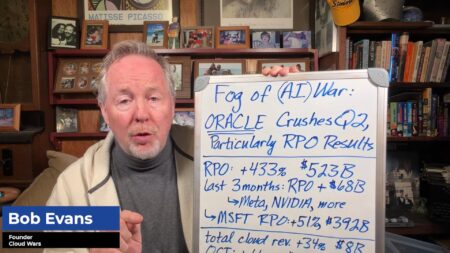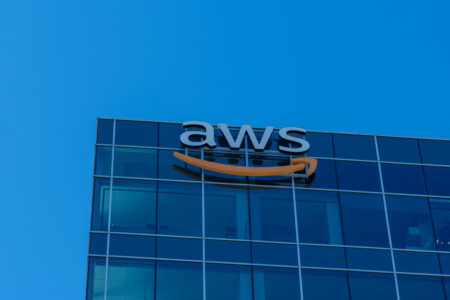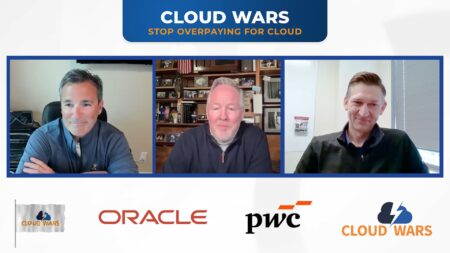One of the highlights of Acceleration Economy’s recent AI Ecosystem Course was a CXO peer review session titled How to Co-Create with Us, featuring these CXO practitioner analysts:
- Wayne Sadin, CIO of PriceSmart
- Manny Korakis, professional services industry CFO
- Joanna Martinez, procurement expert and former chief procurement officer
- Chris Hughes, CISO and co-founder, Aquia
The discussion was moderated by Tom Smith of Acceleration Economy. Smith asked the panelists to explain how they aim t work with platform providers or partners to co-create with them in the AI era.
Discover how AI has created a new ecosystem of partnerships with a fresh spirit of customer-centric cocreation and a renewed focus on reimagining what is possible. The Acceleration Economy AI Ecosystem Course is available on demand.
“The thing about working with partners is they bring something that we don’t [have], no matter who we are,” Sadin says. “They bring experience, they bring working with our competitors, they bring working with people in adjacent industries. They bring all sorts of knowledge we can’t acquire because we’re only one company.”

Sadin explains how one of his priorities as a CIO, when working with partners, is to ensure they don’t just build products for the company on instruction but make suggestions for developing better products that bring more value. In terms of the impact of AI in this process, the technology magnifies this value exponentially.
Co-Creation Partnerships Require Clarity
Korakis said he’s looking for upfront visibility into issues including intellectual property and maintenance rights, among others. “So my caution, whenever we look at things like this is, are we confident about what’s being built?” says Korakis. “If it’s strategic and customer-facing, do we own the intellectual property so we can do with it as we please afterward, or are we handing that over to a partner?”

“If it is customer facing, are we confident that we have the ability to maintain it and enhance it going forward if we’re relying on a partner for the co-creation?” continues Korakis.
Martinez echoed this sentiment: “I think it’s very important to get clarity on what the expectations are on both sides,” she says. “Is this a situation where a supplier is looking to enhance a product that is then gonna be available to the world at large? Or is it something that is specific to the customer they’re dealing with?”
Hughes explains that a focus on clear objectives and transparency when co-creating AI products is equally applicable in a security context.
“Coming from the security perspective, I automatically think of everything from the security and privacy lens,” he says. “Meshing all that data together, not isolating customers’ data, obviously has privacy implications [and] could have regulatory and legal complications for the organization or partnership.”

It’s important, Hughes note, to think about partnerships as a long-term endeavor, looking at the track record of the potential partner you’re trying to co-create with to see what they bring to the table.
What’s Unique About Co-Creation With AI?
The discussion shifted into ecosystem and co-creation partnerships, and how they’re evolving in the era of AI and generative AI. “AI’s principle characteristic is that it enhances anything it touches,” Sadin says. “If [we] use it well, we can make smarter decisions, we can make faster decisions, we can hopefully make better decisions, and it doesn’t matter what the domain is.”
“Normally when you partner with somebody, you’re buying a supply chain product or a forecasting product or a retailing product,” Sadin continues. “With generative AI particularly, in the interfaces that are offered, we can build a system that adapts to the needs of employees wherever they may be in the organization, and I don’t have to teach them a new and arcane user interface.”

Hughes explained how AI co-creation helps to accelerate progress. “Within cybersecurity, these AI capabilities, as Wayne talked about, help you go further faster, help you augment some of your expertise that you already know,” he says. “We’re seeing some really innovative use cases around things like secure coding and software development, for example.”
Korakis agrees that cybersecurity is a key area his company looks to gain efficiencies with AI. “It’s predicting patterns of behavior when somebody might try to attack our system and identifying the anomalies,” he continues. “Everyone that I’ve talked to, in the CFO seat, has agreed that this is an area [in which] there’s a tremendous opportunity.”
Sadin concluded by summarizing the discussion, “There are great opportunities, but a lot of hype,” he says. “There are great risks but great opportunities.
“The key with it is we’re partners to the business, and if we let the partnership crumble, the business will be off doing their solutions, causing risks for Chris; the business will be off spending money, causing risks for Manny; the business will be off doing forecasts that don’t make any sense, causing risks for Joanna, and all of it comes back to the CIO to have to explain to the board.”









